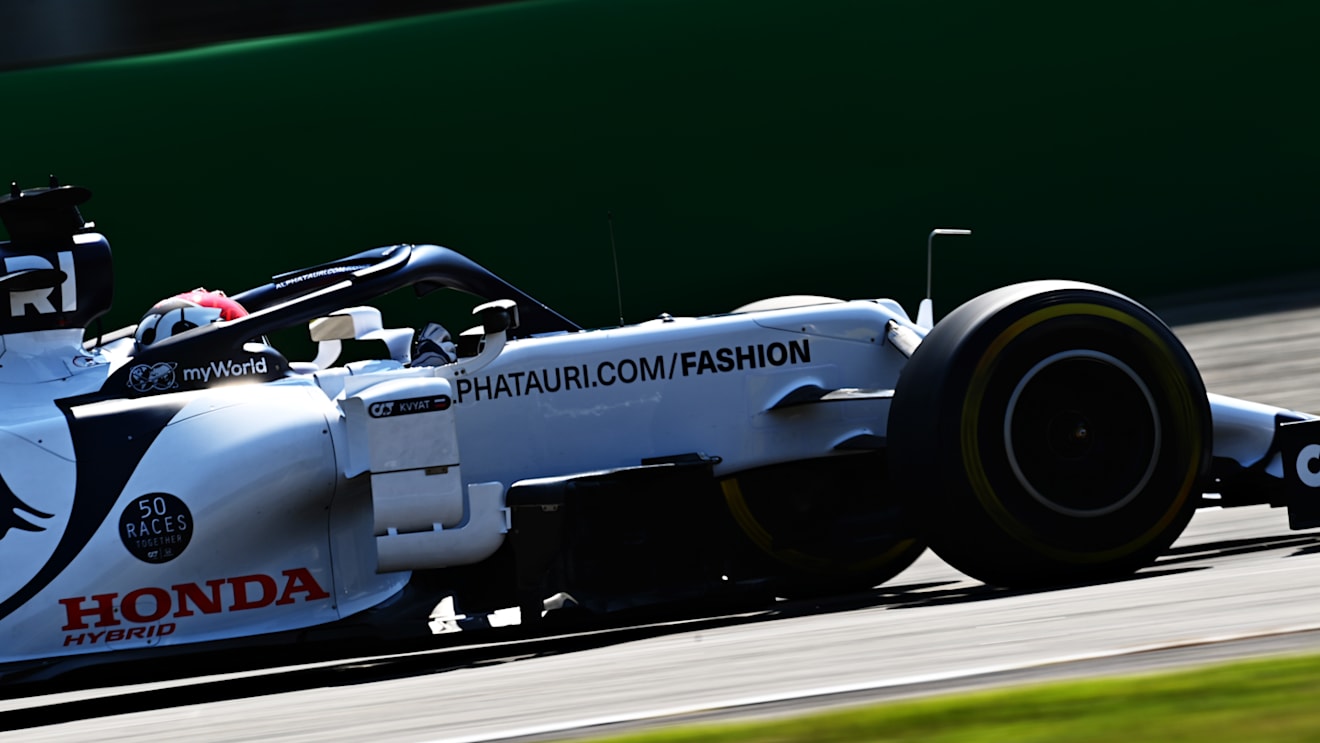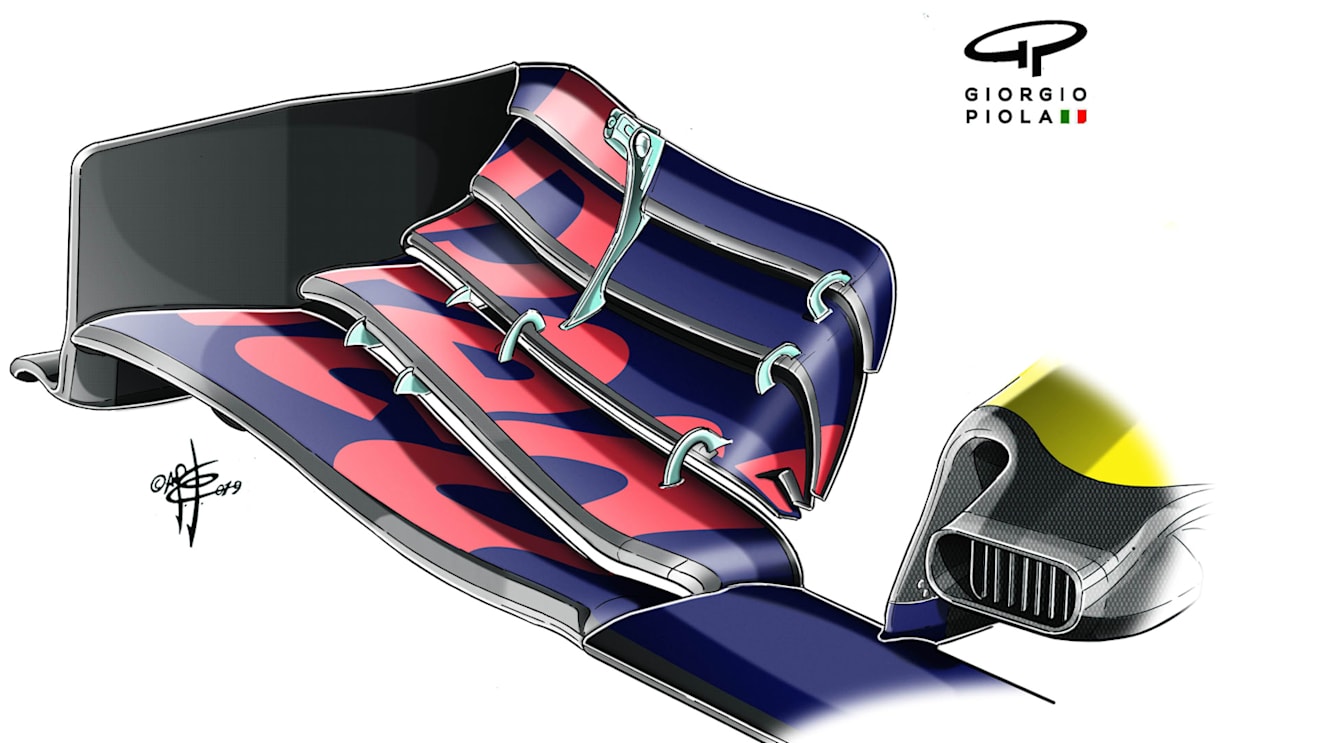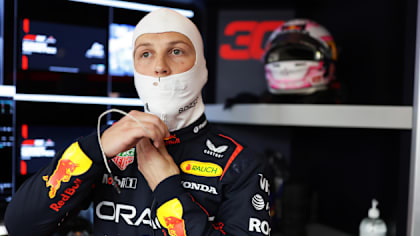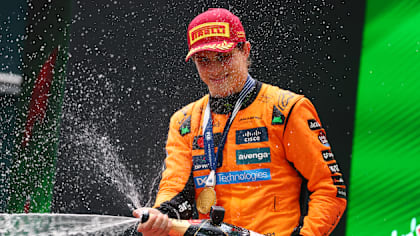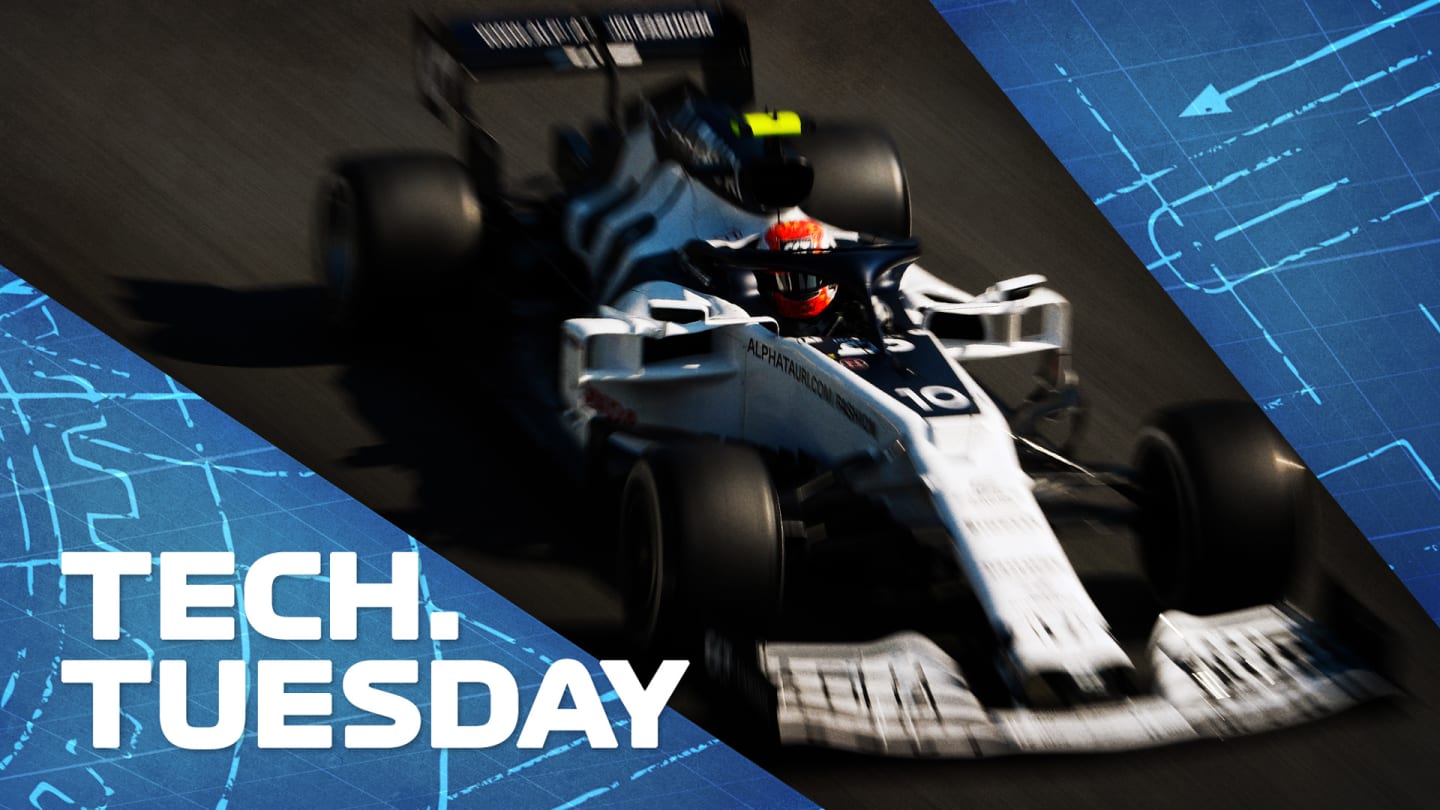
Technical
F1’s latest race-winning car is AlphaTauri's AT01 – but how similar is it to the 2019 Red Bull?

Share

Mark Hughes takes a close look at the AlphaTauri AT01 after Pierre Gasly's Italian Grand Prix victory, with technical illustrations from Giorgio Piola.
Thanks to Pierre Gasly’s starring performance at Monza the AlphaTauri AT01 is now a Grand Prix-winning car. This is just the second machine from the little Faenza team to have achieved this status, following on from 2008’s Toro Rosso STR3. But the regulations were different back then and that car, driven by Sebastian Vettel to victory at Monza, was essentially a then-current Red Bull RB4, albeit with a different engine (Ferrari rather than Renault).
WATCH HIGHLIGHTS: Watch all the action from Pierre Gasly's incredible shock Italian GP victory
It is no longer permitted for teams to share designs but AlphaTauri take advantage of their technical co-operation with the parent team within the limits of the regulations.
Using the same Honda power unit as the current Red Bull RB16, the chassis design is AlphaTauri’s own but based around extensive Red Bull Technology hardware, including the entire rear-end from last year’s Red Bull RB15. This includes gearbox, rear suspension and the associated hydraulics and electronics.
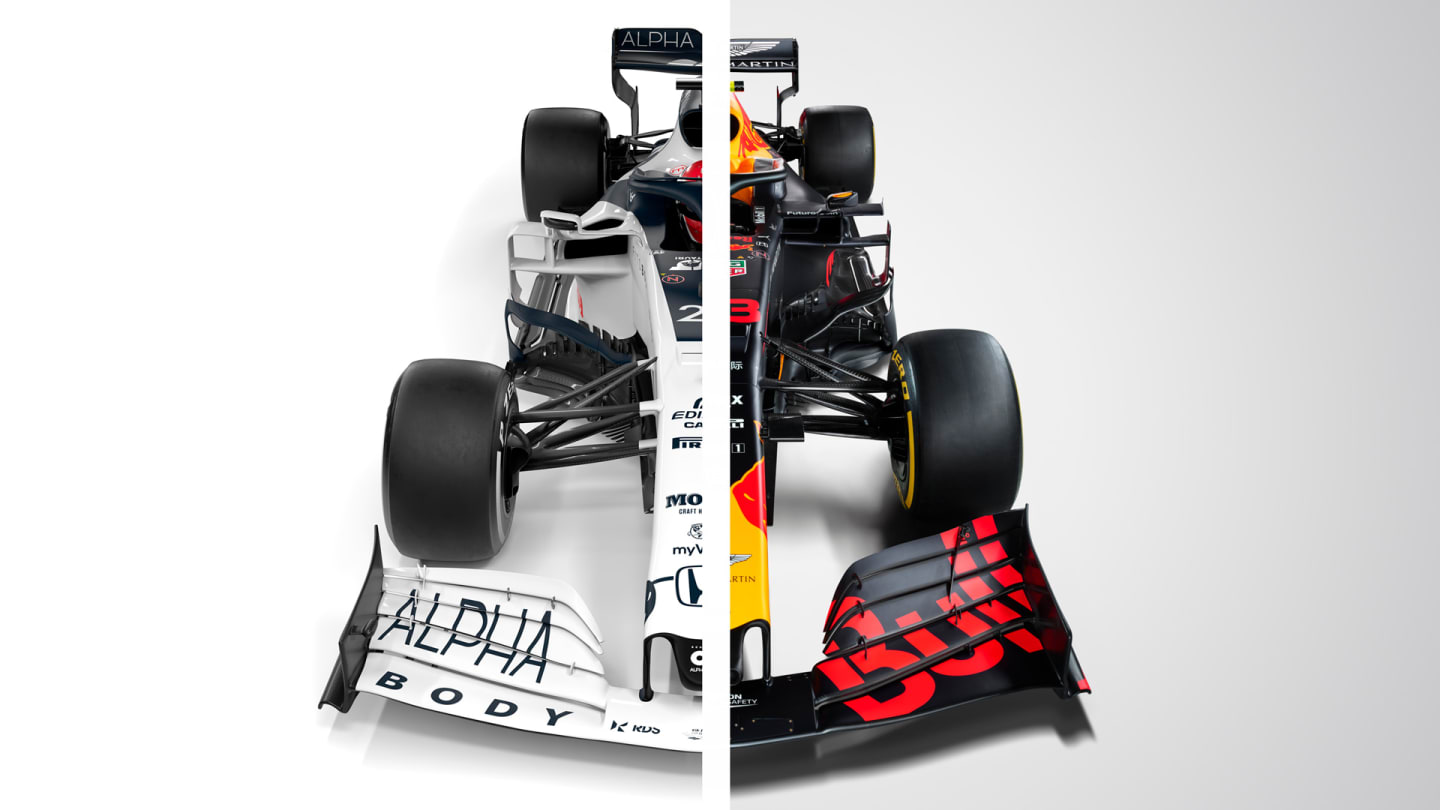
A comparison of the AT01 (L) and the RB15 (R)
The internals of the front suspension – ie the springs, dampers and linkages within the nose – plus the wheel uprights are also from last year’s Red Bull, but the external wishbones, pushrods, etc, are AlphaTauri’s own.
A comparison of those front wishbones shows how much more intricate those of the Red Bull are. They are subtly contoured in many different planes to maximise their aerodynamic influence in the specific airflow of the Red Bull.
Those of the AlphaTauri are simple and straight, even though they are fashioned – like those of the Red Bull – from carbon-fibre. A similar contrast in detail can be seen in the barge boards, with the Red Bull’s visually more intricate.
1 / 2
This is all a reflection of the greater resource of the parent team, with more tools and personnel to research the last tiny increments of aerodynamic performance. It’s the addition of those incremental gains that make the difference.
So far this year the RB16 has qualified an average of 0.64s faster than the AT01. Those 0.64s cost multiples of millions.
The fruits of the research that goes into the incredible sophistication of the Red Bull relative to the AlphaTauri do not apply to the smaller team’s car as the aero gains of, for example, the twisted profile of the wishbones or the shapes of the barge board vanes are specific to the surfaces of that car only.
They would simply not work if applied to the different body surfaces of the AT01. The car’s body surfaces and all the detail must be done by the team itself.
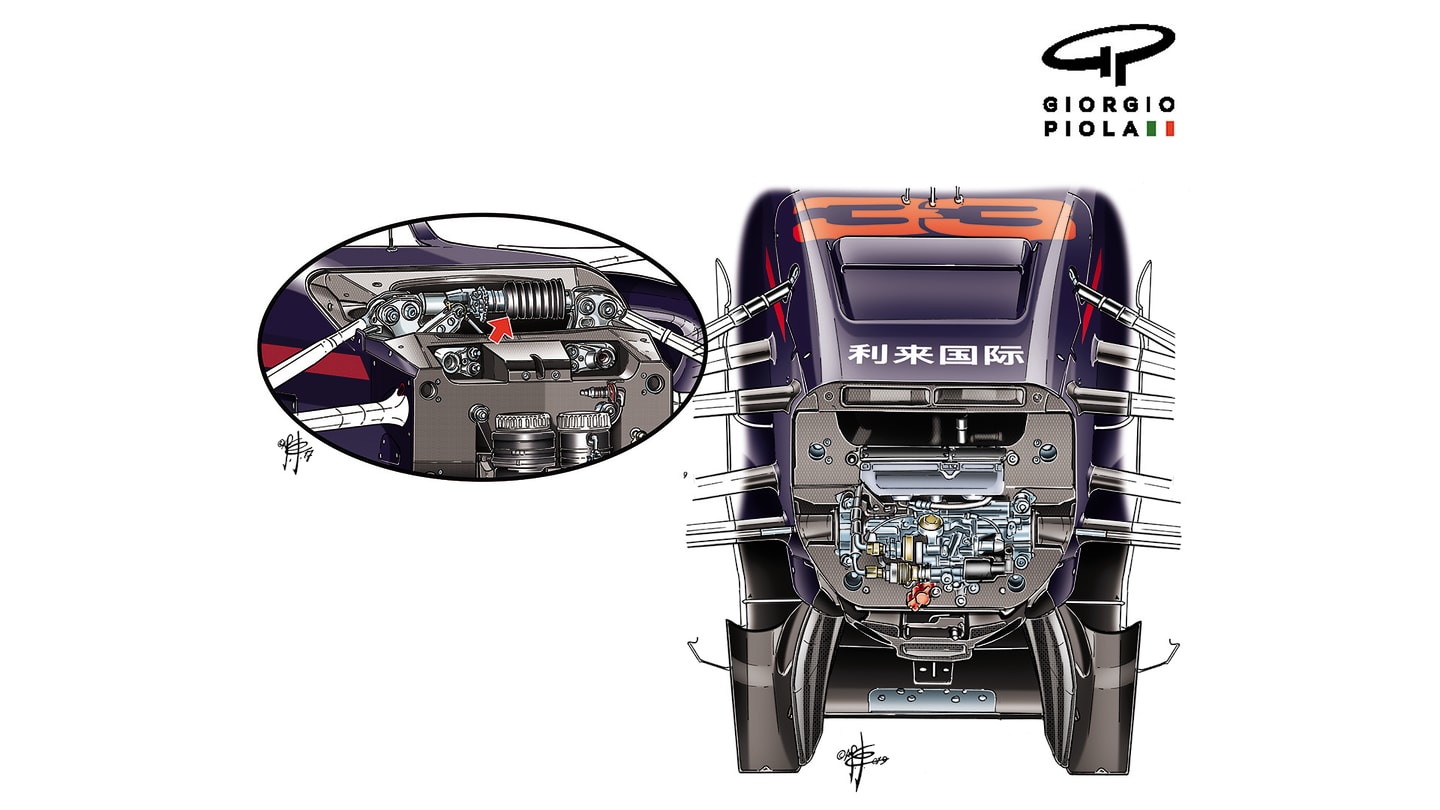
A cross-section of the RB15's front suspension from 2019, the internals of which are used in the AT01
That said, the AlphaTauri is clearly heavily influenced by last year’s RB15. It carries the same fat, short contours of nose (in contrast to the slim one on the current Red Bull). The same gearbox and rear end define the wheelbase of the two cars as identical, even if the bodywork shape is only superficially similar.
READ MORE: A look at the W11 upgrades that show how hard Mercedes are pushing to stay ahead
There is, though, a stark difference in approach between the front wings of the two cars. Red Bull opted for the outboard-loaded wing, with the elements using the full permitted depth whereas the AlphaTauri, like its 2019 Toro Rosso predecessor, has an inboard-loaded wing, with the wing elements reducing in depth towards the outboard end, as you can see in the comparative illustrations below.
This again is a function of greater simulation resource of the parent team – as the outboard-loaded wing has been found to offer greater potential but its airflow down the car is more difficult to manage. Hence the greater complexities of those surfaces.
“The outboard-loaded wing gives some very interesting numbers in the wind tunnel,” revealed the team’s technical director Jody Egginton last year, “but for us, it was too peaky. We couldn’t get it to work with the same consistency.”
1 / 2
One area where the AT01 has made a gain over the Toro Rosso of last year is in the rear end packaging. Last year the Toro Rosso, as a Honda-powered car, was using the rear end of the 2018 Red Bull, which had been a Renault-powered car (the senior team made the switch from Renault to Honda a year after the junior team).
READ MORE: Bringing the power - How Honda created a front-running F1 engine again
The two engines have quite different architecture, with the Honda utilising a split turbo (the turbine and front-mounted compressor separated, connected by a shaft) whereas the Renault has a traditional combined compressor/turbine hung off the back of the engine. This places the engine in a slightly different position within the chassis.
The Renault could be mounted further forward, but the rear-mounted turbo did not allow for as tight-sculpted in-cut of the bodywork. So last year’s Honda-powered Toro Rosso was forced to run a longer wheelbase than it needed simply because it was using a gearbox configured around a Renault engine. This year’s AlphaTauri is using a gearbox designed around the Honda-powered RB15 and there is, therefore, no compromise.
The huge complexity of the Red Bull RB16’s rear end – with an extreme rearward sweep of the wishbones, that sees the rear lower wishbone attach to the crash structure – meant that it could not be produced early enough for AlphaTauri to design their aerodynamics around it.
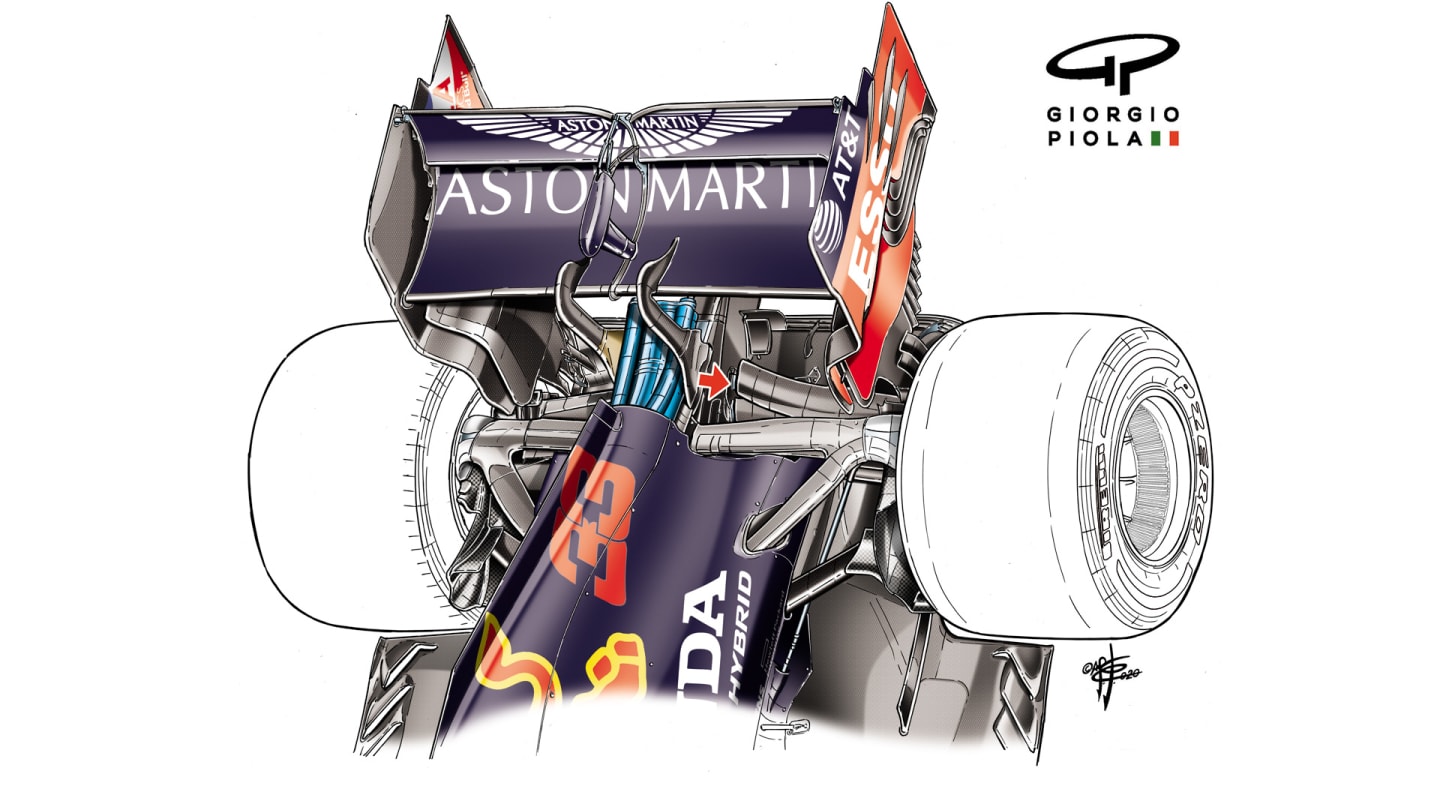
The extreme rear suspension layout of the RB16 can be expected to carry over to next year's AlphaTauri
Hence their use of the 2019 rear end, even though there is nothing in the regulations preventing them from having used the RB16’s.
READ MORE: FIA outline proposed downforce changes for 2021
Next year’s AlphaTauri can be expected to be based around the more extreme RB16 rear-suspension layout. Even though teams must retain existing chassis into ’21, the aerodynamic surfaces can still be developed and the new rear suspension offers significant aerodynamic gains around the diffuser.
In essence it can be seen that while Red Bull are constantly pushing the boundaries of F1 design, the junior offshoot team cannot be so cutting edge, but are doing a superb job in maximising pre-existing technology.
More Tech Tuesdays
- A close look at the ‘experimental’ new nose McLaren tested at Mugello
- F1’s latest race-winning car is AlphaTauri's AT01 – but how similar is it to the 2019 Red Bull?
- A look at the W11 upgrades that show how hard Mercedes are pushing to stay ahead
- What does the 2021 aero rules change mean for the cars – and which teams will it hurt most?
- The Mugello updates that show Racing Point's RP20 is moving away from its Mercedes W10 inspiration
YOU MIGHT ALSO LIKE
Feature TREMAYNE: Remembering the day Zhou made history in Shanghai – and made a whole nation proud
News OFFICIAL GRID: Piastri's maiden pole, as Lawson starts from Shanghai pit lane
News Piastri hails Chinese GP victory as ‘what I deserved last week’ after Australia disappointment
News DRIVER OF THE DAY: Antonelli gets your nod after scoring despite damage in China


